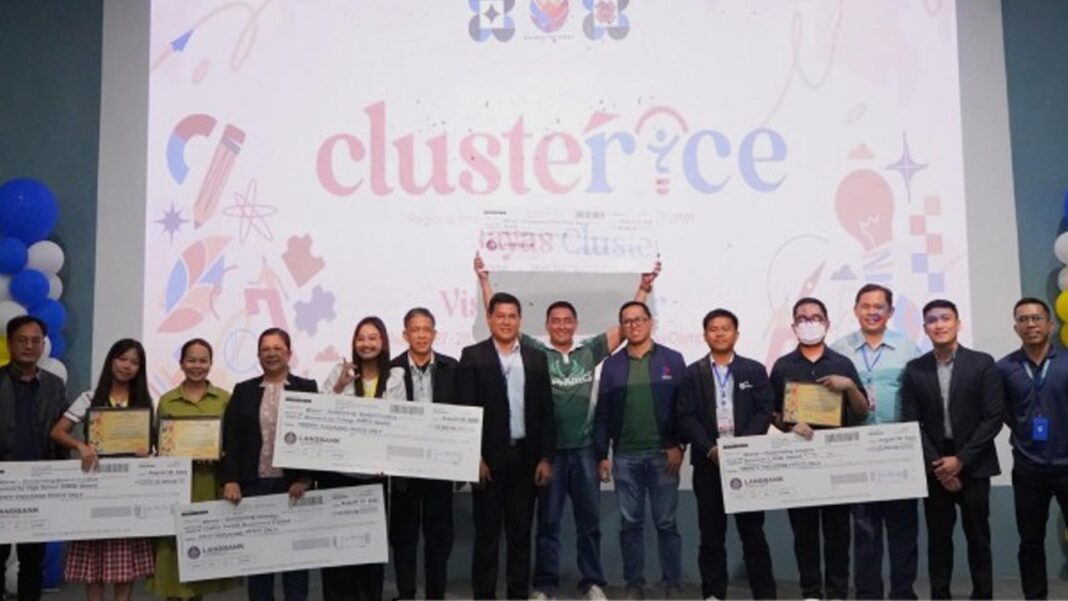Innovations meant to address the concerns of farmers, provide urban planning tools, and evaluate the health-promoting potential of cape gooseberry and stinking passionflower fruits were the winning entries in the Visayas during the Regional Invention Contest and Exhibitions by Cluster (ClusteRICE).
These entries will represent Visayas in the 2026 National Invention Contest and Exhibits (NICE), a biennial event organized by the Department of Science and Technology – Technology Application and Promotion Institute (DOST-TAPI) that celebrates and recognizes Filipino inventors, researchers, and innovators.
Three of the winning entries were meant to solve the problem of farmers, indicating that agriculture is a primary concern of communities in the Visayas, Mark Anthony Bigayan, chief of the DOST-TAPI technology information and promotion division, said in an interview on Friday.
The winner under the outstanding invention is the Coirmach, designed to address the challenges in the Philippine coconut industry, specifically the vast amount of wasted coconut husks and the low income of coconut farmers.
“Coirmach is a coco-fiber twining machine that efficiently produces high-quality, multiple-ply twines directly from raw coconut fibers, combining the twisting and plying functionalities that typically require multiple or manual steps with existing machines,” one of the inventors, Monalyn Oloroso from Mambusao, Capiz, said.
The outstanding invention, also known as the Tuklas Award, recognizes any novel and industrially applicable technical solution to a problem in any area of human activity, which includes an inventive element.
For the outstanding utility model, or the Unlad Award, the winning invention was the seed planter that was developed by engineer Joseph Golingay and Joshua Miguel Golingay, with the Technological University of the Philippines (TUP)-Visayas in Negros Occidental as the applicant.
“Our simple innovation aims to solve the tedious, time-consuming, and back-breaking work of manual seed planting. This innovation allows farmers to plant seeds at a uniform depth by simply thrusting the device into the ground to create a hole, then pulling it up to dispense the seeds. The seed planter significantly improves farming efficiency, reduces manual labor, ensures higher crop yields, and provides farmers more time for other tasks without physical strain,” Golingay told reporters.
The Unlad Award is intended for any new and industrially applicable technical solution to a problem in any field of human activity.
The Project Tanaw: 3D-Printed Urban Model with Geohazard Simulations Using Virtual Environment and AR (augmented reality) Projection Mapping was picked as the best under the Likha Award for outstanding creative research.
Project Tanaw, led by engineer Raven Tabiongan and team, addresses the lack of advanced tools for urban planning and disaster risk management in the Philippines. Focusing on Catbalogan City, the project developed highly accurate 3D urban models by combining 3D printing, augmented reality, and geospatial technologies.
“Project Tanaw significantly improves visualization, risk assessment, and decision-making, supporting Sustainable Development Goal 11 for resilient urban environments. Future work includes expanding data and refining the tools for broader application,” Tabiongan said.
Under the Sibol Award college student creative research category, the winning entry was the I-Count system, an advanced AI-powered solution for automated chick counting and mortality detection in poultry farms.
“It uses high-resolution imaging from strategically placed web cameras, deep learning algorithms, and edge computing to provide accurate and instantaneous data. This system minimizes manual counting errors, reduces labor dependency, and ensures precise inventory tracking and mortality detection, even in challenging conditions like low light or crowded areas,” Bennet Jillian Fabrigas, one of the researchers, said.
For the Sibol Award for high school student creative research, adjudged as best was the study on establishing the nutraceutical potential of quercetin in Physalis peruviana and Passiflora foetida fruits via in vitro bioassays, phytochemical, physicochemical, and nutritional profiling analyses.
“The research aims to comprehensively evaluate whether cape gooseberry and stinking passionflower fruits are good sources of the beneficial compound quercetin, and if so, how this contributes to their overall health-promoting potential. It will use a multi-faceted approach, combining detailed chemical analysis with tests of biological activity and basic nutritional profiling to build a holistic picture of their value as functional foods or natural remedies,” said Rehnyle Gaile Palma, one of the researchers.
Members of Palma’s team are students of the Himamaylan National High School in Himamaylan City, Negros Occidental.
Bigayan said winners have received cash prizes for them to enhance their innovation and compete in the upcoming NICE, along with other winners from the other four clusters – National Capital Region, Southern Luzon, Northern Luzon, and Mindanao.
“Out of entries received from three regions, these standout inventions and research from the Visayas Cluster emerged victorious and will proudly advance to the 2026 NICE,” Bigayan said.
Continuing the success of the previous event, this year’s local innovation search theme is “We RICE the nation with real-world solutions.” It was derived from the 2024 National Invention Contest and Exhibits message: “These are real-world solutions made by Filipinos.” (PNA)


